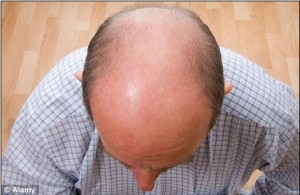Hair restoration treatment Wntb-catenin May Also Reduce fat
For many years, experts have been well aware that the chemical signals emitted by fat cells can stimulate the growth of new hair. However, the research by Watt and Sinclair has shown that the opposite pathway is true as well. In other words, when the hair growth cycle changes, this also affects the thickness of the fat layer beneath the skin’s surface. Hence the conclusion that this potential hair restoration treatment Wntb-catenin may also reduce fat and have an ameliorating effect on obesity.
The hair follicles generate Wnt/b-catenin signals which diminish the production of fat. Likewise, when they are inhibited, more fat cells are created.
These results may lead to topical skin creams which are based on synthetic versions of these compounds. Applying such medication to the skin can potentially diminish the formation of fat. Not only could this serve as a localized intervention for obesity, but also replenish depleted fat tissue in scars.
According to Dr. Sinclair, the hair loss associated with alopecia conditions results in less fat beneath the scalp. Unlike other areas of the body, hair follicles on the head are embedded in higher levels of fat tissue.
Other applications that could result from this discovery of chemical signals is the possible development of topical hair restoration drugs
Hair Restoration As Part of A Larger Physiological Picture
This particular piece of research marks the first time that follicular hair growth has been linked to the production of fat. But it also illustrates part of a larger picture of how seemingly different physiological dynamics are often very much connected.
It is natural for us to imagine hair loss and growth as a set of processes that are isolated from other functions and dynamics in the body. But in reality, the hair follicles are part of various interconnected systems that often overlap. This is why it has been difficult for scientists to develop an actual cure that promotes hair restoration.
Furthermore, there are many other variables that come into play when it comes to the production or loss of hair. Examples include:
- Vitamin D receptors on the follicles
- Prostaglandins which extend the hair growth cycle
- Prostaglandins which promote hair loss
- The role of DHT
- The effect of genes in regulating the hair cycle
- Environmental factors such as drug side effects, toxins and UV light from the sun


